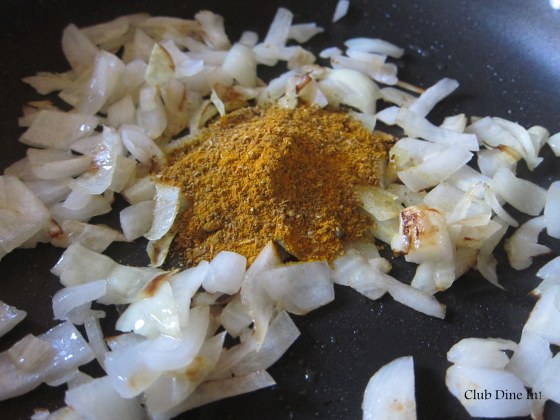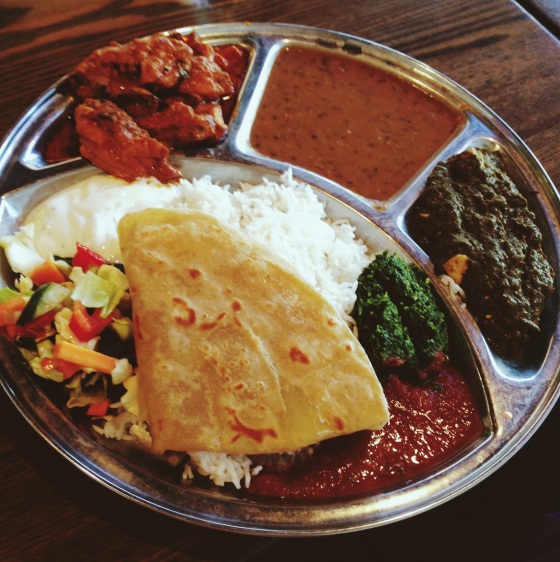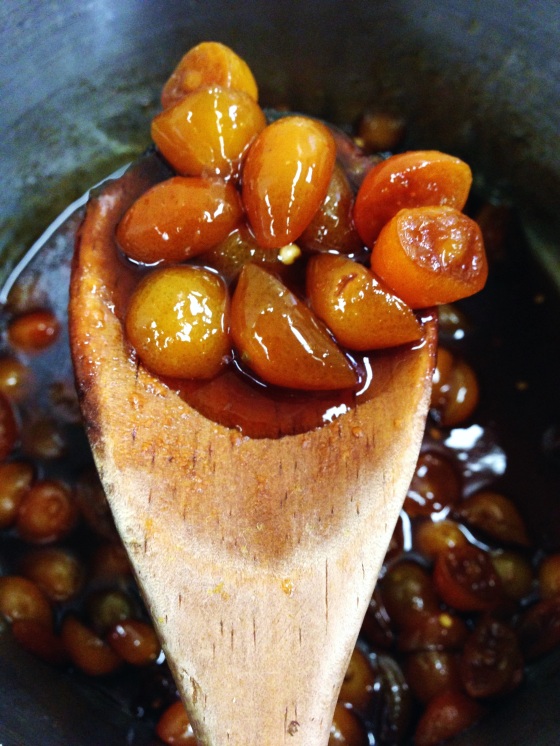Spices are beneficial not only to your taste buds, but to your health. They contain antioxidants, minerals, and vitamins, which are all essential for optimal body function and the prevention of diseases. Spices are booster foods. Only small amounts are needed, but add numerous health (and beauty) benefits. Even if you do not care about how and why spices are beneficial, they are vibrant and add depth and flavor to foods. Spices really can make bland foods taste amazing.
Spices do not necessarily mean hot or burn your mouth off spicy. There are many spices that give you a burn and those are usually derived from Capsicum family. Capsicum is used medicinally to improve circulation and acts a pain reliever. It also releases endorphins, making some people to love spicy hot food. However, spices have a broad range of flavors- not just hot. For instance, cinnamon is sweet and mild. Nutmeg is bitter and pungent, not spicy hot. Therefore, if you cannot handle spicy hot, you can leave out the chili powder. I always ask for my food to be cooked without chilies at restaurants, because I cannot handle the spicy hot flavors.
Spices are cost-effective, since you only need a couple of teaspoons at a time for lots of flavor. They also last up to a year when stored in an airtight container and in a cool, dark place. Unfortunately, light and heat destroys flavor and beneficial properties of the spices, so keep them far from the stove, microwave, oven, and direct sunlight. When spices start to loose their color, it’s time to toss them out and restock. Buy smaller quantities of spices unless you go through large quantities quickly.
Ethnic stores are the best places to find quality spices at lower prices, but regular grocery stores should carry mostly everything you need. Always make sure to read the ingredients label, to ensure no artificial coloring, sugar, salt, MSG, preservatives, or wheat has been added. Turmeric should only have turmeric listed in the ingredients. Cumin should only have cumin listed in the ingredients and so on. These additives can have a negative impact on your health, alter the flavor of the spice, and are just unnecessary. Spices naturally can withstand extreme temperatures. After all, most of them are grown, harvested, and prepared in scorching, tropical climates.
Spices stay longer when bought in their whole or seed form and ground up into a powder just before using it. A spice grinder, mortar and pestle, or coffee grinder will do the job, However, be sure to wash the coffee grinder well, before using it for coffee. Though, this extra step can add an extra few minutes to cooking and can be enough of a deterrent for you to skip spices altogether. Ground spices are just fine if you can use them within six months to a year. It is usually a good idea to toast the spices before adding them into soups and curries. Authentic Indian recipes will always ask you to cook them for one minute in a dry pan or along with the onions, before adding tomatoes or other ingredients. Spices release their flavor when heated and people often do not like the taste of raw spices.
Just start cooking with spices! Variety is the key to getting all of the different nutrients from spices. They are also naturally low in calories and easily transforms a tasteless to dish into something incredible.
Invaluable Indian Spices In My Pantry
I have a cupboard full of spices and cannot imagine cooking anything without using at least one or two spices. I think that by not adding spices to a dish, I am missing out on an opportunity for delicious flavor and health benefits. A single Indian dish can contain tens of spices, but I usually stick with only a handful. These are my staples for when I am cooking and I do not limit using them to just Indian food.
Curry Powder– This isn’t truly a staple in traditional Indian kitchens, but it’s a lifesaver. Curry powder is a British invention. It is usually a combination of chili powder, cumin, coriander, fenugreek, and turmeric. Curry powder can vary greatly in taste, depending on the quality, ratios of spices, and types of spices used. For instance, I have found Sri Lankan curry powder to be a richer red and spicier, whereas curry powder from Northern India is golden and sweeter. For serious cooks, curry powder is personal and they usually have their own special blend. My personal favorite is this curry powder. Whenever a dish tastes dull, I add a teaspoon at a time of curry powder to liven up the taste. I always make sure to keep curry powder around, above all of the other spices. This chicken coconut curry is delicious.
Cumin– Cumin relieves intestinal gas, pain, and bloating. When toasted, cumin is aromatic and pungent. It tastes bitter, which helps stimulate saliva. Digestion of food begins with saliva. Cumin can be used in its seed form or ground to a powder. I throw cumin seeds in the rice cooker along with the rice and ghee and call it a pilaf. Guests are always impressed by this trick. This delicious and colorful carrot salad gets its flavor from toasted and crushed cumin seeds. This Moroccan Mint Roasted Vegetables recipe makes use of cumin powder and seeds.
Ginger is referred as the universal medicine and has been used throughout the world for thousands of years for its healing properties. Ginger helps with colds, flues, indigestion, gas, bloating, vomiting, nausea, low appetite, arthritis, headaches, pain, and heart disease. Above all, ginger is widely used as a digestive aid. It is heating and ginger tea is often given to those who are feeling cold. I always have fresh ginger root around. I usually peel the ginger root, throw it in a mini chopper, and store the minced ginger in an airtight container in the fridge for about a week. It’s easier to use this way. Add ginger to juices and teas, soups, stir-fries, curry dishes, and in baked goods. My favorite way to use ginger is in masala chai and in all curries dishes.
Himalayan or Black Salt (Kala Namak) is not a typical spice to keep in the pantry. It is often my secret ingredient and is used in lieu of table salt. Black salt, despite its name, is pinkish in color due to its rich trace mineral and iron content. The taste is distinct and you actually need to use less of it than boring, old table salt. It does have a distinct flavor, so experiment to your liking. Always purchase naturally derived black salt, since synthetically black salt is stripped of most minerals and depth of flavor. Throughout India, black salt is used in chaats, chutneys, raitas, and on fruits. Just try a freshly sliced guava sprinkled with black salt- it’s amazing. Give this Kale Yogurt Raita a try with black salt.
Turmeric (Arad) has long been recognized for it’s natural antibiotic properties and anti-inflammatory actions. Turmeric also acts to improve intestinal flora and numerous studies have shown its superior ability to prevent and fight cancers and diseases. Turmeric is even used topically for facials and skin irritations. The powerful antioxidant in turmeric is called curcumin. You might be tempted to pop turmeric pills, but adding it to your meals will do the job just fine. It comes from a root that looks similar to ginger root. The root can be minced and added to hot water, to make an herbal tea. Whenever I feel a cold coming on, I try to drink one cup of turmeric tea a day. The powdered form is commonly used in cooking. It doesn’t really have a distinctive flavor, but adds a bright, beautiful color to any dish. Add 1/4 teaspoon in soups, salad dressings, curry dishes, marinades for meat, fish, and poultry, or grains. This is one of my more popular recipes on the blog.
In January, I started volunteering at Mission High School as an aide for the school nutrition and leadership program. The class explores all types of cuisines and use their vegetable garden to cook. In May, I got the opportunity to teach the students about Ayurveda and the benefits of using spices. The students made Spring Pea Curry, Raita, Chai, Carrot Salad, Kumquat Chutney (pictured above), and Gluten Free Chai Spiced Biscuits.












